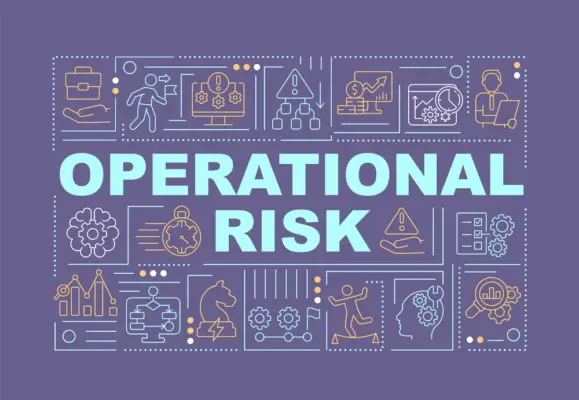Crafting good risk scenarios and statements is key to effective risk management. Describe potential events, causes, and consequences concisely to aid decision-making. Ensure clarity and alignment with objectives for shared understanding among key stakeholders throughout.
Focus on identifying risks, planning responses, and updating regularly. Examples include operational disruptions, cyber threats, and reputation damage.
Remember to review and refine statements regularly for accuracy and relevance. Arranging risks clearly enhances decision-making and risk communication. Stay tuned for more insights on navigating uncertainties effectively.
Consider what and why, that is, risks, plan for them, and update as appropriate. Some examples of scenarios are operational breakdowns, disruptions, cyber-attacks, data breaches, and reputational losses.
Risk statements and scenarios should also be reviewed and updated as necessary for precision and fitness for purpose.

Formulate and express risks in simple, clear language for better decision-making and communication. Watch this space for our next post with more tips and ideas on dealing with uncertainty.
Key Takeaways
- Describe possible events, causes and consequences.
- Align with goals and objectives and manage stakeholders’ expectations.
Introduction to Risk Statements
What do we mean when we refer to risk statements? And why are they important in risk management? Risk statements are brief descriptions of possible events, causes, and consequences that may guide and assist decision-making and the development of strategies and appropriate courses of action.
In other words, they help manage risk in particular circumstances.
Definition and Importance of Risk Statements
Therefore, it is important to understand the meaning of risk statements and their importance in risk management to identify and plan for risks effectively.
A risk statement succinctly and clearly describes a risk, its likelihood of occurrence, and its consequences should it occur. Put another way, it threatens to achieve an objective in simple and straightforward language.
What are the benefits of good risk statements? Risk statements help develop a common understanding of the risk among all involved parties and stakeholders, which can improve decision-making.
They improve the effectiveness of risk identification and assessment, planning and treatment, and communication of risk and its treatment to all involved. When you express a risk and its consequences in simple and clear terms, you and others will better understand the threat and how to prepare for and respond to it.
Ultimately, good risk statements contribute to better decision-making and support effective risk management and practices. In our next post, we will watch this space for more tips and ideas on dealing with uncertainty.
Therefore, the art of writing good risk statements is essential to accurately identifying risks, assessing their implications, and devising and implementing suitable risk treatment plans to mitigate them effectively.
Crafting simple and clear risk statements is thus a crucial skill any organisation seeking to improve its risk management practices should possess.
Understanding the Risk Management Process
It is important to understand that risk management is a process of identifying, assessing, and treating risk factors that may prevent you from achieving your objectives.
Comprehending the process will guide you in formulating good risk scenarios and statements to help you make decisions.
Always consider what and why, i.e. identify risks and plan for them to ensure effective risk management.
Identify Risks and Plan Responses
The first phase of the risk management process is identifying and planning risks, which is essential for effectively managing them.
Risk identification is, therefore, an important step in risk management. Understanding what may happen to a project allows one to appreciate the implications of the risks should they occur.
Clearly defining the risk events will help you write good risk statements and assess all identified risks appropriately.
After identifying the risks, it is time to plan appropriate responses for each. This phase involves analyzing the possible impacts of the risk event and determining the best course of action in response to the threat.
Planned risk responses should always be documented in the risk register so that all team members know the strategies in place should the risks occur.
Good risk statements guide the risk assessment process and the development of effective risk responses thereafter. Take time to identify risks and plan for them to mitigate the threats and protect your project should the risks happen.

Crafting a Compelling Risk Statement
So, how do you write a good risk statement? A risk statement should clearly describe the possible risk event, its consequences and, where available, the cause of the potential risk event.
Having a complete picture of these key components in a risk statement helps stakeholders understand the risk and its implications and take appropriate actions as necessary.
Best practices in writing risk statements and statements include using precise and clear language, aligning with goals and objectives, managing stakeholders’ expectations, and updating as necessary.
Key Elements of a Risk Statement
Crafting a compelling risk statement involves describing the possible risk event, its consequences and, where available, the cause of the event.
A good risk statement fully describes the identified risk for effective risk management. The possible risk event should describe the actual risk itself, such as design faults, technology failure, or supplier issues.
Outlining the consequences of the risk is vital as it will state what impact the risk event will have on cost, time, or performance should it occur.
Furthermore, stating the cause of the risk event, where known, will provide valuable insight into the root cause of the problem.
These key elements combine to form an effective risk statement format that will assist you in managing risk proactively. By describing the possible risk event, its consequences and the cause, you can write a clear risk statement to help you mitigate the risk before it’s too late.
Best Practices for Writing Risk Statements
To craft a compelling risk statement, it is important to understand the key risk-related words and thoroughly understand the business goals and objectives. When writing risk statements, always consider using precise and clear language to ensure everyone understands the risk and its implications.
Good risk statements have a specific format that includes key elements such as the negative or undesirable event, actors or parties involved, impact on assets, and the context or conditions in which the risk occurs.
Consider the risk scenario in relation to your business, such as information security threats, financial instability and operational discontinuities that may affect your organisation.
Effective Risk Management with Risk Statements
How do we manage risks effectively using risk statements? To write good risk descriptions, you should always consider describing the possible events and consequences and the causes where possible in simple and clear statements.
Ensure the risk statements are specific, detailed and finally aligned with organisational goals and objectives.
Setting Up for Success
Effective risk management relies on writing proper risk statements identifying and describing threats and opportunities to your company’s assets. There are several ways you can set yourself and your project team up for success when it comes to managing risks and increasing the chances of achieving your objectives.
All identified risks should follow the good practice process of writing risk statements that are clear and concise. By doing so, you stand a better chance than usual of successfully managing your organisation’s risks.
Writing good risk statements is important in the risk management process. They provide a structure for identifying threats and opportunities that may arise in the future.
When you write risks using precise and clear statements, you will have the information required to make better decisions and take proactive steps to mitigate any losses should the risks occur.
Examples of Risk Statements
What do we mean when we refer to examples of risk statements? Consider business and operational risks, as well as strategic and reputational risks.
The following categories cover a broad range of possible risk scenarios that may occur and affect the organisation’s various interests.
Distinguishing between these will assist you in writing specific and relevant risk statements for your organisation according to its risk appetite.
Business and Operational Risks
Writing clear and concise risk statements is vital in identifying potential business and operational risks. For example, failing to deliver products and services as customers require will result in revenues and market share loss.
When writing risk scenarios for business risks, you should consider, for example, supply chain disruptions that may result in unmet demand and compliance failures that may lead to legal fines and penalties.
Conversely, operational risks may include system failures resulting in plant downtime and employee mistakes leading to information breaches.
The above risk statements help identify the possible implications of the various risk factors to your organisation and allow the risk analyst to conduct a detailed risk assessment.

Strategic and Reputational Risks
How do you write risk statements for strategic and reputational risks? When writing risk statements in this category, consider the possible events that may adversely affect your organisation’s long-term goals and image.
For example, a risk scenario in this class could involve a privileged industry insider disclosing sensitive customer information to competitors, which may result in losing competitive advantages.
Another scenario could involve a cyber attacker stealing sensitive customer information and threatening to publish it unless a ransom is paid. This would attract response costs, damage to reputation, and possibly litigation.
When writing risk statements for strategic risks, consider how these actions may affect your organisation’s overall success.
Similarly, reputational risks to be protected are the public perceptions of the brand, and the image should always be preserved.
Review and Refine Risk Statements
When it comes to reviewing and refining risk statements, consider the following tips. Remember that risk statements require regular updates to ensure they remain relevant.
Regular Review and Update
Evaluating risk effectively requires continuous review of the risk register for overall risk management effectiveness during a project.
As a project manager, you should review and update the risk register, which contains all the details of the identified risks, at least every month, as well as your other routine and project management activities and reviews.
By updating the risk register, you can raise new risks as they appear and assess their possible implications on your project. Ensure you monitor risks to verify their effectiveness and also identify any new risks that may arise.
Conclusion
Many practitioners puzzle over how to write good risk statements. Risk statements and scenarios hold the key to driving effective decision-making.
Write clear risk statements to help stakeholders understand the risks. This will allow all involved parties to respond proactively to possible threats to the project’s success.
The Power of Compelling Risk Statements in Risk Management
The power of compelling risk statements is that they provide the necessary platform for effective risk assessment and decision-making in risk management.
A good risk statement gives a complete description of the identified risk and ensures that all aspects of that risk are understood.
A risk statement should clearly describe the risk by expressing the possible risk event, its consequences, and if known, the cause of the event.
Using a structured format in risk statements helps eliminate any scope for confusion, develop risk statements, and create more effective risk statements.
Frequently Asked Questions
How do you write strong risk scenarios and statements?
When crafting strong risk scenarios and statements, clearly define events causing potential losses, identify involved actors, and specify impacts on assets. Keep scenarios simple and direct for better understanding and analysis. Precision matters.
What Is an Example of a Risk Assessment Scenario?
When considering a risk assessment scenario, think about a cyberattack on a data center. Identify the threat actors, vulnerable assets, and potential consequences like system downtime. Crafting a clear narrative helps understand risks and plan mitigations effectively.
What Are Examples of IT Risk Scenarios?
When considering examples of IT risk scenarios, consider scenarios like unauthorized access leading to data breaches, malware causing system downtime, phishing attacks resulting in financial loss, DoS attacks disrupting operations, and ransomware incidents causing business disruptions.
How Do You Write a Good Risk Report?
When you write a good risk report, clearly define identified risks, potential impacts, and causes. Keep the report structured and concise to aid stakeholders in decision-making. Regular updates ensure alignment with current risks and goals.

Conclusion
Writing effective risk scenarios and statements is crucial for your organization and successful risk management. You can enhance clarity and facilitate thorough analysis by clearly defining potential events, actors, and impacts.
Remember to use direct language and simplicity in your scenario statements to improve risk assessment accuracy. Crafting compelling risk statements enables analysts to identify key variables and mitigate risks effectively.
Review and refine your risk statements to ensure they accurately reflect potential risks and support strategic decision-making.

Chris Ekai is a Risk Management expert with over 10 years of experience in the field. He has a Master’s(MSc) degree in Risk Management from University of Portsmouth and is a CPA and Finance professional. He currently works as a Content Manager at Risk Publishing, writing about Enterprise Risk Management, Business Continuity Management and Project Management.

